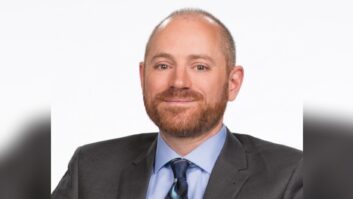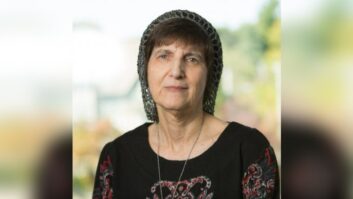So the National Weather Service and National Oceanic and Atmospheric Administration are shelving “Perfect Paul” and replacing it (him?) with Perfect Donna and Perfect Craig? Oh happy day, let’s celebrate. (Not!)
For a better perspective of what the NWS is serving up these days and into the future, it’s necessary to go back 10 years to the halcyon days when forecasts and alerts on our local weather stations were written, compiled and voiced “locally” by living, breathing humans.
Weather conditions
For many years, the forecasts originated at the nearby airport NOAA office.
At the beginning of each forecast cycle, the forecaster identified him or herself by name and presented the current weather conditions, forecasts, river levels, daily weather statistics and any weather watches, warnings or advisories as necessary. Weather conditions could be verified and adjusted as needed, based on observation through the office window.
The old, tape-based playback system did have its drawbacks, to be sure – dragging carts and missed cue tones – but the information imparted was accurate, timely and above all personal. NWS employees were involved and available to ascertain the quality of the broadcasts and make corrections/repairs as necessary.
With the advent of the “Console Replacement System,” my local NWS office was closed, and all duties of the weather service radio were transferred to the largest nearby city, Portland, Ore.
Gone were all of the familiar voices, but worse, the quality of the service deteriorated dramatically in terms of content, accuracy and audio quality. The hard-disk audio system that feeds the NWS VHF broadcast transmitter receives its audio via dial-up telephone service, with the attendant loss of audio bandwidth, introduction of distortion, hum, and handset handling noise.
Ambient noise frequently was evident, including loud conversations, background music, doors slamming and other distracting noise. The NOAA employees voicing the information were variously bored, sleepy, sick, disinterested or aggressive. In one case, the speaker had a strong regional accent and consistently mispronounced area place names.
Added to this was the fact that the forecasts and conditions were coming from an office more than 100 miles away, which meant that the information was sometimes incorrect and/or out of date.
For the first two weeks of operation from PDX (Portland), the call sign at the beginning of the cycle was incorrect! Information that had no reason to be broadcast in this area would frequently pop up and just as quickly disappear. The system occasionally would get caught in a loop, repeating one part of a forecast cycle endlessly.
If the job of the previous local staff was to forecast, observe and report, providing programming content for just one weather service radio transmitter, the Portland office employees’ involvement was reduced to rip-and-read, disseminating pre-formatted information to scores of WSR transmitters in two states. No wonder some of them sound stressed.
‘Perfect Paul’ (Not!)
Enter “Perfect Paul.”
At first, I was really irritated by this robot’s droning delivery, but soon began to find that it was at least consistent, and had fewer problems and idiosyncrasies than the distant NWS employees exhibited.
Actualities voiced by the human employees still exhibit the gamut of problems, not the least of which is inconsistent audio levels, ranging from nearly inaudible to grossly distorted by too-loud delivery. Our friend “Paul” tends to raise the pitch of his voice and get whiny when asked to enunciate an extended sentence without taking a breath.
Now we’re expected to believe that the “Craig” and “Donna” replacements are going to make it all very acceptable again.
Sorry, I listened to the online examples, and they don’t come close to the polished delivery of Rick Wagner and the rest of the local NWS crew back in the days when the broadcasts were live.
I also doubt that some of the problems that still plague the “Perfect Paul” system will be much modified in the new system. Odd characters, misspellings or abbreviations typed into the text of the speech synthesis computer make for some interesting, yet unintelligible strings of words, numbers and spoken punctuations.
Lately, the local NWS office has begun airing a portion of the forecasts using the “Craig” voice. I was prepared to describe the vocalizations as dead flat, but after enduring a few weeks of the updated system, I have to say that a return to Perfect Paul would be an improvement.
“Craig’s” inflection and cadence are all over the map. I’m having an interesting time understanding the speech, finding that it actually takes mental “work” to decipher the rapid-fire delivery of the concocted spoken words, many of which seem to have no pause before the next, running otherwise familiar words into new and different contractions.
In the event of several consecutive misunderstood phrases, I find myself barely able to keep up with the continuing forecast while trying to understand the previous sentence. This is exercise even without additional “munged” or corrupted dialog to further confuse the message being delivered.
NWS consolidation
Ultimately, the consolidation of the NWS service to regional offices has resulted in an on-air product that completely lacks the feedback loop necessary to ensure the quality of the information and its delivery. That loop is concerned local staff members who listen to the broadcasts and corrects anomalies on an ongoing basis.
Would I air NWS audio services on a broadcast station? Fortunately, I’m not in a position to have to make that call, but on a personal level, I’d have to say no, I would have a station staff member transcribe the information and voice it locally as long as the advisory was not urgent.
The sudden switch of broadcast station programming to an unfamiliar and obviously canned synthesis of vocalized words strung together is likely to confuse the average listener, and cause him or her to discount any immediate warning or advisory. Nothing compares to a live human voice, particularly a familiar one, to convey urgency of an alert or warning.
Will the NWS be in a position to bring greater public and broadcast professional acceptance of its services via the Weather Service Radio by using “Craig” and “Donna”? Not likely. One might just as soon hope for a return to the pre-console replacement service days programming content. It’s always comforting to have expectations, however unrealistic.
Radio World welcomes other points of view to [email protected].












